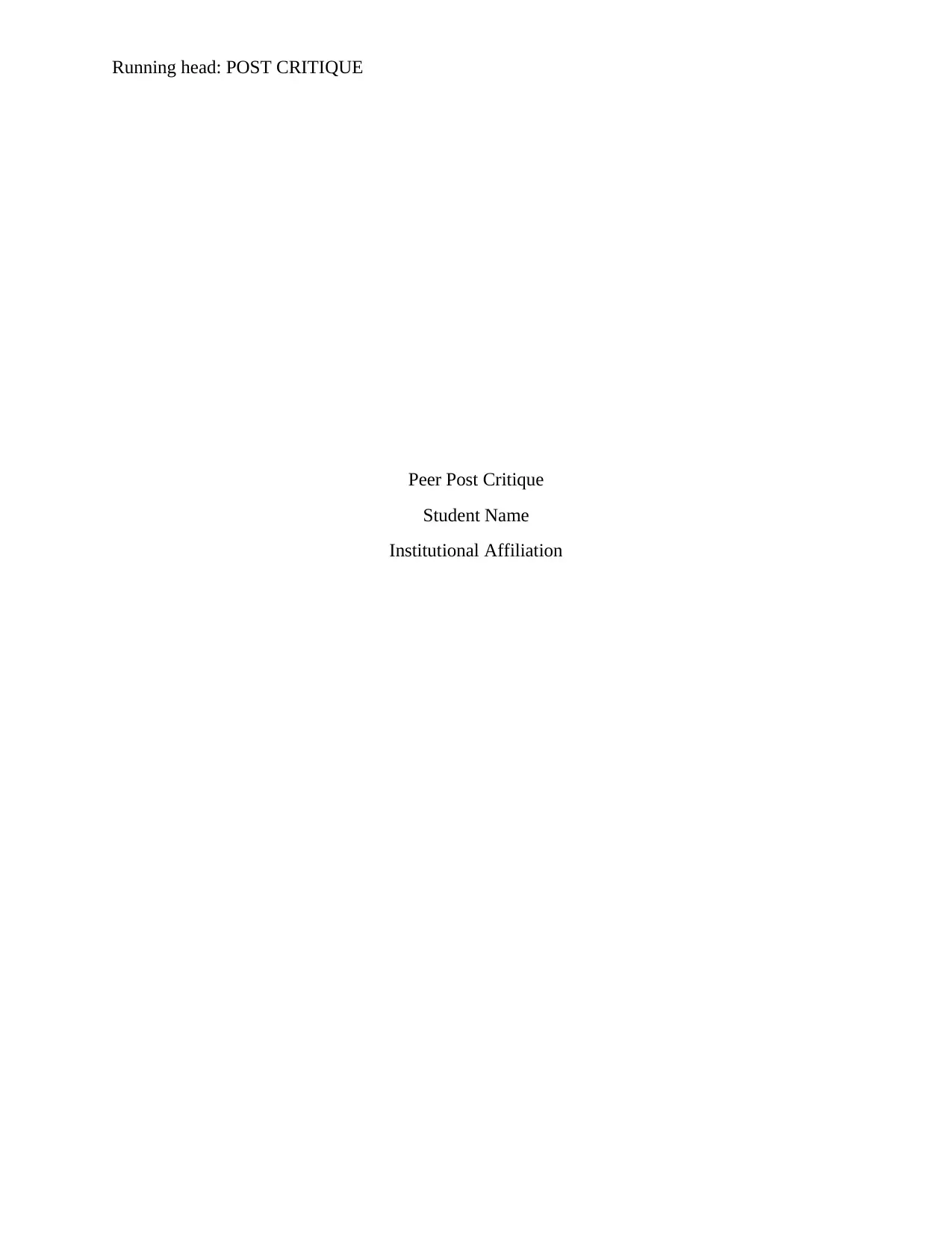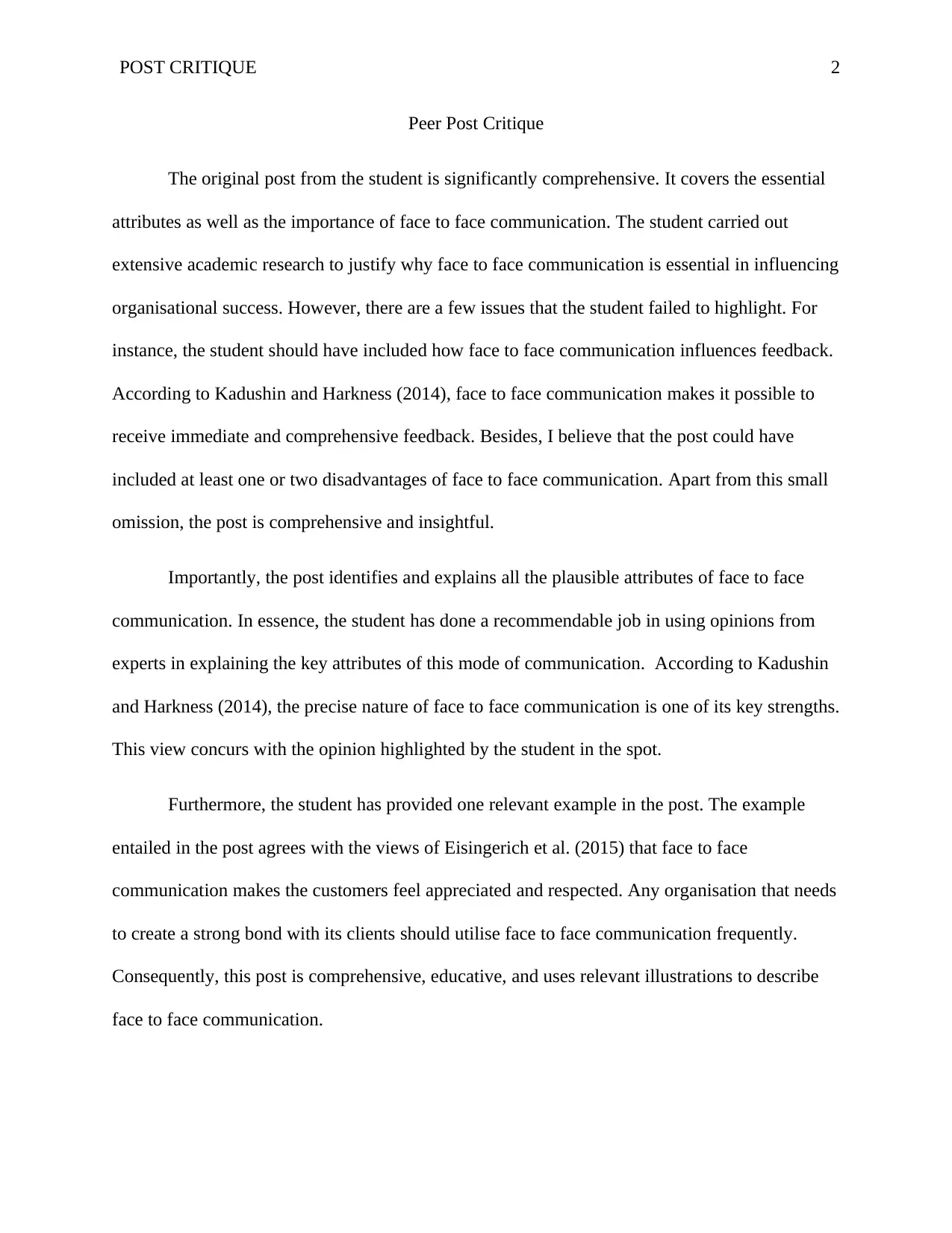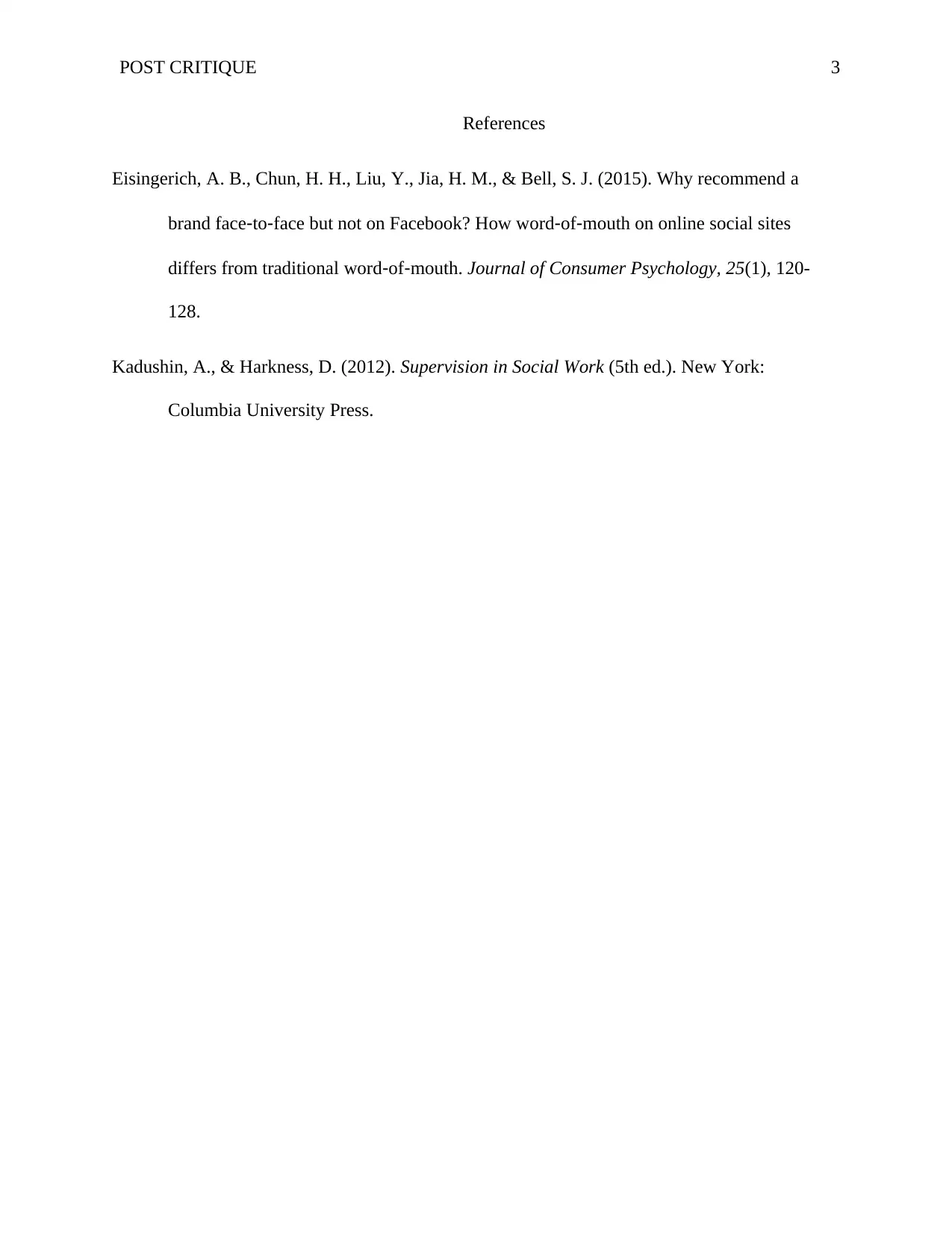Peer Critique of Face to Face Communication: Analysis and Insights
VerifiedAdded on 2023/02/01
|3
|413
|47
Discussion Board Post
AI Summary
This assignment is a peer critique of a discussion board post focusing on the importance of face-to-face communication. The critique acknowledges the original post's comprehensive nature, highlighting the significance of face-to-face communication and its impact on organizational success, sup...

Running head: POST CRITIQUE
Peer Post Critique
Student Name
Institutional Affiliation
Peer Post Critique
Student Name
Institutional Affiliation
Paraphrase This Document
Need a fresh take? Get an instant paraphrase of this document with our AI Paraphraser

POST CRITIQUE 2
Peer Post Critique
The original post from the student is significantly comprehensive. It covers the essential
attributes as well as the importance of face to face communication. The student carried out
extensive academic research to justify why face to face communication is essential in influencing
organisational success. However, there are a few issues that the student failed to highlight. For
instance, the student should have included how face to face communication influences feedback.
According to Kadushin and Harkness (2014), face to face communication makes it possible to
receive immediate and comprehensive feedback. Besides, I believe that the post could have
included at least one or two disadvantages of face to face communication. Apart from this small
omission, the post is comprehensive and insightful.
Importantly, the post identifies and explains all the plausible attributes of face to face
communication. In essence, the student has done a recommendable job in using opinions from
experts in explaining the key attributes of this mode of communication. According to Kadushin
and Harkness (2014), the precise nature of face to face communication is one of its key strengths.
This view concurs with the opinion highlighted by the student in the spot.
Furthermore, the student has provided one relevant example in the post. The example
entailed in the post agrees with the views of Eisingerich et al. (2015) that face to face
communication makes the customers feel appreciated and respected. Any organisation that needs
to create a strong bond with its clients should utilise face to face communication frequently.
Consequently, this post is comprehensive, educative, and uses relevant illustrations to describe
face to face communication.
Peer Post Critique
The original post from the student is significantly comprehensive. It covers the essential
attributes as well as the importance of face to face communication. The student carried out
extensive academic research to justify why face to face communication is essential in influencing
organisational success. However, there are a few issues that the student failed to highlight. For
instance, the student should have included how face to face communication influences feedback.
According to Kadushin and Harkness (2014), face to face communication makes it possible to
receive immediate and comprehensive feedback. Besides, I believe that the post could have
included at least one or two disadvantages of face to face communication. Apart from this small
omission, the post is comprehensive and insightful.
Importantly, the post identifies and explains all the plausible attributes of face to face
communication. In essence, the student has done a recommendable job in using opinions from
experts in explaining the key attributes of this mode of communication. According to Kadushin
and Harkness (2014), the precise nature of face to face communication is one of its key strengths.
This view concurs with the opinion highlighted by the student in the spot.
Furthermore, the student has provided one relevant example in the post. The example
entailed in the post agrees with the views of Eisingerich et al. (2015) that face to face
communication makes the customers feel appreciated and respected. Any organisation that needs
to create a strong bond with its clients should utilise face to face communication frequently.
Consequently, this post is comprehensive, educative, and uses relevant illustrations to describe
face to face communication.

POST CRITIQUE 3
References
Eisingerich, A. B., Chun, H. H., Liu, Y., Jia, H. M., & Bell, S. J. (2015). Why recommend a
brand face‐to‐face but not on Facebook? How word‐of‐mouth on online social sites
differs from traditional word‐of‐mouth. Journal of Consumer Psychology, 25(1), 120-
128.
Kadushin, A., & Harkness, D. (2012). Supervision in Social Work (5th ed.). New York:
Columbia University Press.
References
Eisingerich, A. B., Chun, H. H., Liu, Y., Jia, H. M., & Bell, S. J. (2015). Why recommend a
brand face‐to‐face but not on Facebook? How word‐of‐mouth on online social sites
differs from traditional word‐of‐mouth. Journal of Consumer Psychology, 25(1), 120-
128.
Kadushin, A., & Harkness, D. (2012). Supervision in Social Work (5th ed.). New York:
Columbia University Press.
You're viewing a preview
Unlock full access by subscribing today!
1 out of 3
Your All-in-One AI-Powered Toolkit for Academic Success.
+13062052269
info@desklib.com
Available 24*7 on WhatsApp / Email
![[object Object]](/_next/static/media/star-bottom.7253800d.svg)
Unlock your academic potential
© 2024 | Zucol Services PVT LTD | All rights reserved.